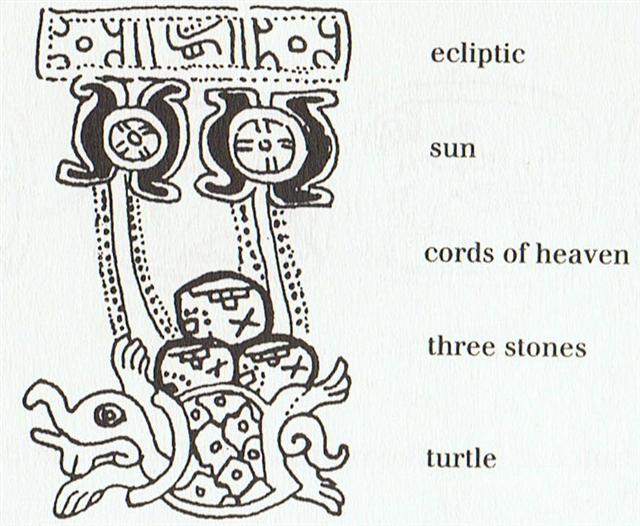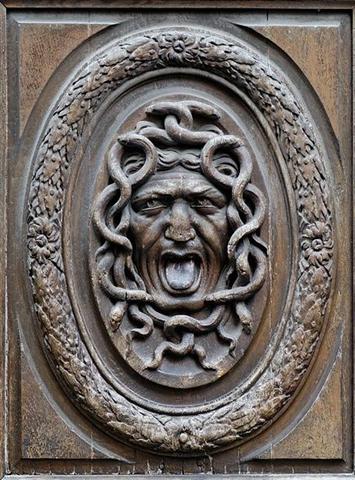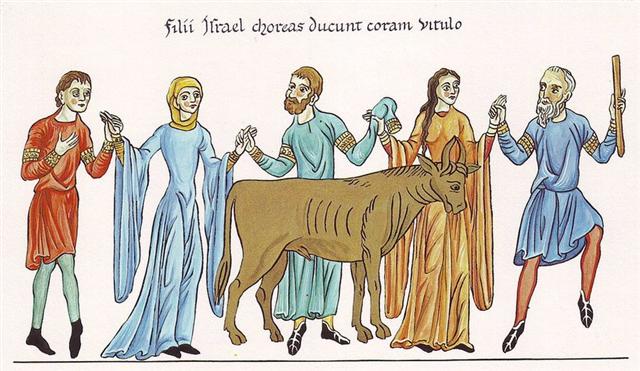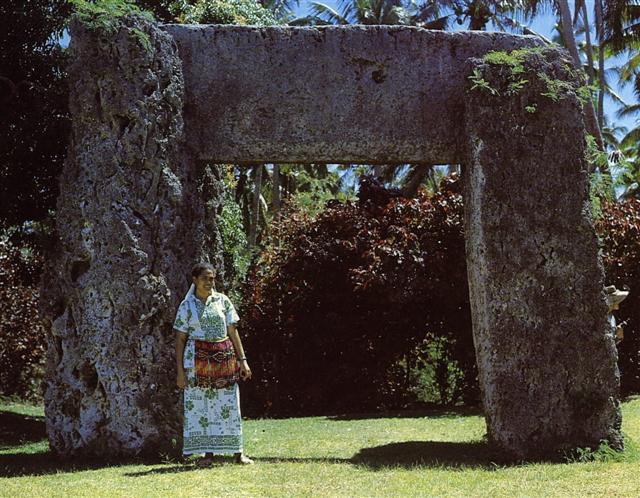|
TAHUA
28 Natural numbers should always be sacred and never be played with at random:
In spite of some uncertainties we can guess number 225 was referring to August 13 (225) - the day for the Creation of Our Present World. And then we would be able to infer that side a might have been meant to reflect the days of summer and side b the nights of winter. 224 → 22 * 4 = 88. ... Lifting a huge doorstone, such as two and twenty good four-wheeled wains could not have raised from the ground, he set this against the mouth of the cave, sat down, milked his ewes and goats, and beneath each placed her young, after which he kindled a fire and spied his guests ...
Stars were stones (tau), for instance in the name for the 3 (toru) Belt-stars of Orion, Tau-toru.
And likewise we have Tau-ono (6 stones = 6 stars) as a name for the Pleiades. ... The Mahabharata insists on six as the number of the Pleiades as well as of the mothers of Skanda and gives a very broad and wild description of the birth and the installation of Kartikeya 'by the assembled gods ... as their generalissimo', which is shattering, somehow, driving home how little one understands as yet. The least which can be said, assuredly: Mars was 'installed' during a more or less close conjunction of all planets; in Mbh. 9.45 (p. 133) it is stressed that the powerful gods assembled 'all poured water upon Skanda, even as the gods had poured water on the head of Varuna, the lord of waters, for investing him with dominion'. And this 'investiture' took place at the beginning of the Krita Yuga, the Golden Age ... Looking in the G text for ideas regarding what star might have been referred to as a 'huge doorstone' by Homer, I found a promising one in Gb4-24 (24 * 4 = 96 = 88 + 8), which is the only glyph on the G tablet resembling Aa6-81 and Ra3-10:
Possibly we should compare the 'huge doorstone' with a Medusa door ornament:
... Odysseus and his fleet were now in a mythic realm of difficult trials and passages, of which the first was to be the Land of the Cyclopes, 'neither nigh at hand, nor yet afar off', where the one-eyed giant Polyphemus, son of the god Poseidon (who, as we know, was the lord of tides and of the Two Queens, and the lord, furthermore, of Medusa), dwelt with his flocks in a cave ... Two months (from MARCH to May) + 4 days = 64 days was the derived precessional timespace depth down to the Golden Era of the Bull.
And glyph number 348 (→ 12 *29) corresponding to right ascension day *348 at MARCH 4 (365 + 63 = 428 = 80 + 348) confirms that side a on the G tablet was designed to begin at Ain (the Eye of the Bull) in MARCH 22 (81), because 81 + 347 = 428. The G text is firm ground (terra firma) ... During his descent the ancestor still possessed the quality of a water spirit, and his body, though preserving its human appearance, owing to its being that of a regenerated man, was equipped with four flexible limbs like serpents after the pattern of the arms of the Great Nummo. The ground was rapidly approaching. The ancestor was still standing, his arms in front of him and the hammer and anvil hanging across his limbs. The shock of his final impact on the earth when he came to the end of the rainbow, scattered in a cloud of dust the animals, vegetables and men disposed on the steps. When calm was restored, the smith was still on the roof, standing erect facing towards the north, his tools still in the same position. But in the shock of landing the hammer and the anvil had broken his arms and legs at the level of elbows and knees, which he did not have before. He thus acquired the joints proper to the new human form, which was to spread over the earth and to devote itself to toil ... and we should from there be able to map what could be the corresponding places in the A and R texts:
Here the element rima aueue illustrates how the rongorongo texts seem to vary slightly from a basic terrain in timespace. Could this phenomenon be due to what specific year was referred to? Or could it be due to how the 'words of the songtexts' came in slightly different ordinal places?
Aue. Ah, alas. Aueue, oh. P Pau., Ta.: aue, alas. Mgv.: aue, auhe, alas. Mq.: aue, oh, alas; auhe, a sigh. Exclamation in general representing the most primordial type of speech, it seems that this may be reduced to recognizable elements. The e is throughout these languages a vocative or hailing sign, commonly postpositive in relation to the person hailed. In the examination of au we have shown that the primal first person singular designation is u. With the comparatively scanty material afforded by this vocabulary we may not attempt to define the use of a but we have no hesitation in noting that proof based on wider studies will show it to have, inter alia, a characteristic function as a word-maker. In a very high degree, then, a-u-e is represented by a common English interjection 'oh my!' in which oh = a, my = u, and e = !. Churchill. What is this cry which our primitive islanders share with the animals? Look at its elements, all full-throated. First we have a, the sound of mouth open, fauces open, lungs full of air. As air expires the sound recedes in the mouth towards the palate and we find the u. Last comes the conscious finish of the utterance, the muscles begin to retract, the sound-making point is forced forward and the sound is e. If the man had but a few more cubic centimeters of lung capacity he could attain cow volumne for his cry, or interjection, since it amounts to the same thing. Churchill 2. When the new moon appeared women assembled and bewailed those who had died since the last one, uttering the following lament: 'Alas! O moon! Thou has returned to life, but our departed beloved ones have not. Thou has bathed in the waiora a Tane, and had thy life renewed, but there is no fount to restore life to our departed ones. Alas ... (Makemson)
By the way, side b on the C tablet carries 348 glyphs.
|
||||||||||||||||||||||||||||||||||||||||||||||||||||||||||||||||||||||||||||||||||||||||||||||||||||||||||||||||||||||||||||||||||||||||||||||||||||||||||||||||||||||||||||||||||||||||||||||||||||||||||||||||||||||||||||||||||||||||||||||||||||||||||||||||||||||||||||||||||||||||||||||||||||||||||














